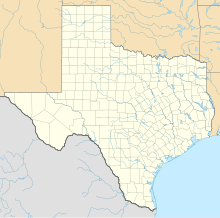Battle of Blanco Canyon
| Battle of Blanco Canyon | |||||||
|---|---|---|---|---|---|---|---|
| Part of the Indian Wars | |||||||
 Blanco Canyon, seen from the west rim, on Highway 82 |
|||||||
|
|||||||
| Belligerents | |||||||
|
4th Cavalry Regiment (United States), Tonkawa scouts |
Comanche Kotsoteka and Quahadi Band | ||||||
| Commanders and leaders | |||||||
| Ranald S. Mackenzie | Quannah Parker | ||||||
| Strength | |||||||
| 600 men, including 20 Tonkawas | 300-400 | ||||||
| Casualties and losses | |||||||
| 1 dead, 2 reported wounded, including Col. Mackenzie. | 5 | ||||||
|
|
|||||||
The Battle of Blanco Canyon was the decisive battle of Col. Ranald S. Mackenzie's initial campaign against the Comanche in West Texas, and marked the first time the Comanches had been attacked in the heart of their homeland. It was also the first time a large military force explored the heart of Comancheria. On 12 August 1871 Mackenzie and Colonel Benjamin Grierson were asked by Indian Agent Lawrie Tatum to begin an expedition against the Kotsoteka and Quahadi Comanche bands, both of whom had refused to relocate onto a reservation after the Warren Wagon Train Raid. Col. Mackenzie assembled a powerful force consisting of eight companies of the Fourth United States Cavalry, two companies of the Eleventh Infantry, and a group of twenty Tonkawa scouts.
New evidence in "West Texas Historical Review" Vol. XCI 2015 by Todd Smith and Paul Carlson shows the battle occurred in Southeastern Crosby County about seven miles east of the suspected site.
The force assembled at the site of old Camp Cooper, on the Clear Fork of the Brazos River on 19 September 1871. The force set out in a northwesterly direction on 30 September 1871, hoping to find the Quahadi village, which housed the warriors led by Quanah Parker. This village was believed to be encamped in Blanco Canyon near the headwaters of the Freshwater Fork of the Brazos River, southeast of the site of present Crosbyton, Texas. On the fourth night of the march, the expedition established a base camp at the junction of the Salt Fork of the Brazos and Duck Creek, near the site of present Spur, Texas. The following day, Col. Mackenzie made the decision to leave his infantry to fortify the base camp, and set out for Blanco Canyon with his cavalry, hoping to catch the Comanche by surprise, and strike a blow at them in their heartland.
...
Wikipedia

